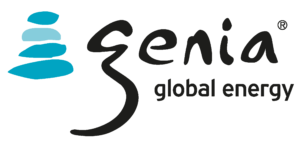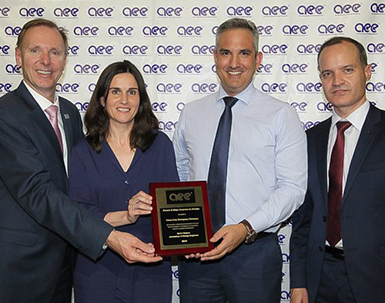Customer: Coca-Cola European Partners
Energy Cost Reduction: 93.30%
Energy Savings: 3.8 million kWh/year
Emissions Reduction: 1,265 tCO2
Amount of CO2 Eliminated: Absorbed by 47 pines/year
Area of Action Greater Than: 90,000 m2
Power Reduction: 474,60 kW
Reduction of Luminaires: 4,200
Through its sustainability strategy “Avanzamos,” Coca-Cola European Partners established a series of environmental objectives it wanted to reach by 2025. One of those objectives is to increase energy efficiency, which drove the company to replace the lighting in its Martorelles (Barcelona) facility. For the project, the Coca-Cola European Partners selected Digital Lumens intelligent LED luminaires which contain smart sensors and instrument the Internet of Things (IoT), as well as the advanced lighting control system to manage light intensity and the shutdown of the luminaires. With the intelligent lighting system, the goal was to achieve more than 90% in lighting-related energy savings and improve lighting conditions over the course of three years.
The renovation of 23,539 m2 in warehouse areas was completed between 2018 and 2019. Up next, the production area and additional warehouse spaces will get intelligent LED luminaires which will complete the installation of energy-efficient intelligent lighting across 90,000 m2.
The intelligent LED luminaires and lighting control achieved greater than 90% in energy savings and in some instances exceeding 97% which represents 3.8 million kWh per year and 1,265 Tm of CO2 per year. This reduction in emissions is equal to the carbon absorbed in a year by a small forest of 47 adult stone pines (a pine tree species that absorbs the most CO2).
Before the installation of new luminaires, the project engineers calculated the optimal distribution of the intelligent lighting systems in order to maximize savings and improve the quality of the lighting with a minimal number of luminaires.
“We drew the Coca-Cola factory in three dimensions and redistributed the intelligent lighting system to see how it behaved. Once this simulation was done,we implemented different measurement systems throughout the factory to analyze energy consumption. Then we installed a demonstration system to verify that the actual savings data corresponded to the consumption estimated in the study and to show that the installation was perfectly viable.”
– Gabriel Butler, Genia Global Energy
Before & After
In the comparison below, we can see the difference between an old lighting system of fluorescents, and intelligent LED lighting.
- The sensors embedded in the intelligent LED luminaires harnessed the daylight that enters through the skylights to illuminate the facility
- Reduction of light points is approximately 4-to-1

Figure 1: Before the Digital Lumens installation, when the plant had fluorescent lighting

Figure 2: After the installation of LED luminaires
Daylight Harvesting for Greater Efficiency

Figure 3: Savings from Daylight Harvesting
The plant used Daylight Harvesting, a lighting strategy where the sensors embedded in the intelligent LED luminaires use natural light to illuminate the area without compromising the quality of light to increase energy conservation and savings.
The chart above shows data belonging to the whole plant and in the photo, we can see how the lights in the storage area are completely turned off during the day. The savings over the course of a three-day period are in red.
Best Energy Project of the Year
Through the installation of Digital Lumens’ energy-efficient light luminaires and controls at the Barcelona plant, the Coca-Cola European Partners have created a benchmark for success. This project was given the “Best Energy Project of the Year Award” by the AEE (Association of Energy Engineers) which has chapters in more than 90 countries. The award, which was delivered within the framework of the iENER’19 Congress, recognizes the excellence of professionals and their actions to increase energy efficiency and sustainability.
In addition to conserving more energy and achieving significant savings, the intelligent LED luminaires also instrument the entire plant with facility and process monitoring capabilities to create non-lighting energy savings.
“The project to renew the lighting, which was launched in 2017 and will end in 2019, is aimed at reducing energy consumption. The annual savings exceed 3.5 million kWh/year,” explained Pedro Vinhas, VP Supply Chain de Coca-Cola European Partners Iberia. The Barcelona plant was inaugurated in 2006 with 5,500 fluorescent lights that are now replaced by 1,300 state-of-the-art intelligent LED luminaires. The plant achieved over 93% in lighting-related energy savings compared to the original lighting luminaires and the net power has been reduced by almost half a gigawatt.
“The new lighting, in addition to being much more efficient, allows the luminaire to be controlled by the luminaire and to establish different working hours depending on the staff’s presence. This gives us a lot of versatility and allows us to adjust the plant’s lighting with great precision,” says Pedro Vinhas.
“With this installation, Coca-Cola European Partners improved the lighting quality in its facilities, optimized the patterns, and the distribution of the lighting to reinforce the safety of the workers and reduced energy consumption in the plant,” he concludes.





